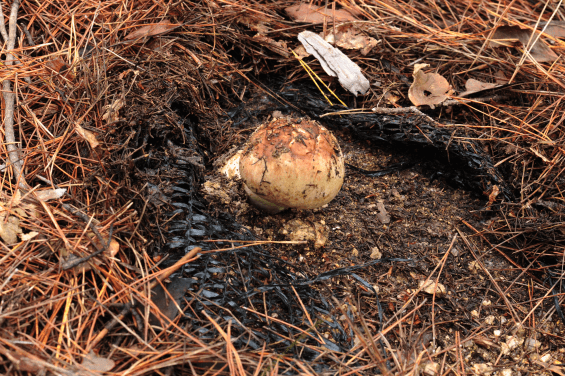The Korea Forest Service’s National Institute of Forest Science announced on the 17th that it will apply artificial cultivation technology for pine mushrooms to restore forests affected by wildfires in the Yeongnam region.
This technology involves planting 3-5 year old pine seedlings inoculated with pine mushroom spores. The National Institute of Forest Science has conducted practical experiments on this technology for about 20 years in experimental forests in Goseong and Hongcheon, Gangwon-do, proving its applicability through actual pine mushroom occurrences.

The Goseong experimental forest, established after a wildfire in 1996, planted 27 infected seedlings in 2007, resulting in the first occurrence of 5 pine mushrooms in 2023, with 1 additional occurrence in 2024.
The Hongcheon experimental forest, established in 1995, transplanted a total of 192 infected seedlings from 2001 to 2015. Pine mushrooms first appeared in 2010, and have continuously appeared for eight consecutive years since 2017, totaling 70 instances reported.
Based on these research results, the National Institute of Forest Science aims to enhance local forestry income alongside forest restoration in the Yeongnam area. To achieve this, they plan to hold explanatory sessions for local residents and actively promote technology transfer.
Park Eung-jun, head of the Forest Microorganism Utilization Research Division, stated, “Through extensive data analysis, we have scientifically confirmed that pine mushrooms can emerge from inoculated seedlings. We hope this technology will contribute to supplementing the income of mountain village residents.”